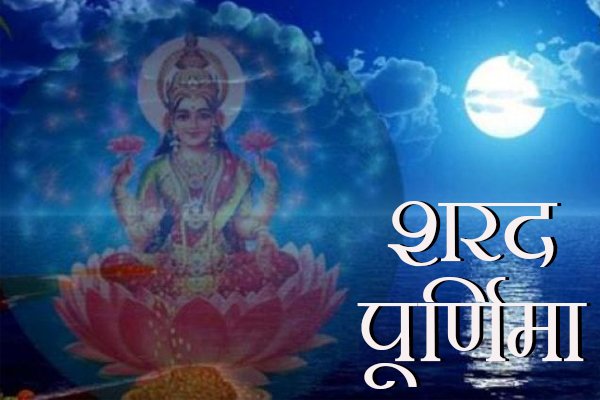
The full moon of the Shukla Paksha of Ashwin month is known as Sharad Purnima. On this day, the moon is full of all its arts. It is believed that on this day, the moon rays show off the nectar. The moonlight is the brightest on this day. Brahmakamal, the most loved flower of Goddesses and Gods, also blooms on Sharad Purnima night. According to the scriptures, religious rituals performed on this day bear manifold fruits.
Sharad Purnima is known by many names such as – Kumara Purnima, Kojagiri Purnima, Navanna Purnima or Kaumudi Purnima, a festival celebrated at the end of the monsoon season on the full moon day of the Hindu lunar month of Ashwin (September to October). The harvest is festive.
Importance of Sharad Purnima
Sharad Purnima day is considered auspicious, due to which many religious rituals are also performed on this day. On the day of Sharad Purnima, the Moon is very close to the Earth. Because of which the chemical elements falling from the moon are very positive and the positivity increases in whoever eclipses it. Sharad Purnima is also known as Kamudi Festival. On this day, Mother Lakshmi walks. Because of this Sharad Purnima is also called Kojagara in Bengal which means who is awake.
Kojagari Purnima is a concern about observing the Kojagara fast. People observe this fast under moonlight after a day-long fast. Lakshmi, the goddess of wealth, is worshiped on this day as it is believed to be her birthday. Lord Indra, the god of rain, sits on an elephant, Lord Shiva along with Mata Parvati and the carrier Nandi are also worshiped. Devotees break the fast at night and offer rice and milk to the moon god after offering them. The detailed description of this night is given in Brahma Purana, Skanda Purana and Linga Purana. These Puranas state that Goddess Lakshmi rotates the earth during this night to see the actions of humans.
It is believed that if Kheer is kept and eaten in the moonlight of moon on Sharad Purnima day, the person’s body resistance capacity increases and it also gives the body the ability to fight against diseases. Respiratory patients benefit from it. It also improves eyesight. Hemant season starts only after this full moon and gradually the winter season also starts. Goddess Lakshmi is specially worshiped on this day.
In Odisha, unmarried women fast on this day with the belief of finding their worthy groom. The festival starts at sunrise by welcoming the sun god made of coconut leaves called ‘Kula’ consisting of 7 fruits like coconut, leaf, coconut, banana, betel nut, sugarcane, guava. In the evening, before the ‘Tulsi’ plant, the moon breaks its fast by preparing a dish consisting of fried paddy in the morning with fruits, curd and jaggery to offer to the Lord. The girls then play and sing in light of the full moon.
Ashwin Purnima fasting auspiciously
Purnima starts: 17.47 on October 30, 2020
Full moon ends’ on October 31, 2020 at 20.21
Disclaimer
The accuracy or reliability of any information / material / calculation contained in this article is not guaranteed. This information has been sent to you by collecting it from various mediums / astrologers / almanacs / discourses / beliefs / scriptures. Our aim is just to convey information, its users should consider it as mere information. Apart from this, the responsibility of any use of this will rest with the user himself.
Also read in Hindi: Sharad Purnima: जानें क्या है शरद पूर्णिमा का शुभ मुहुर्त और महत्व
